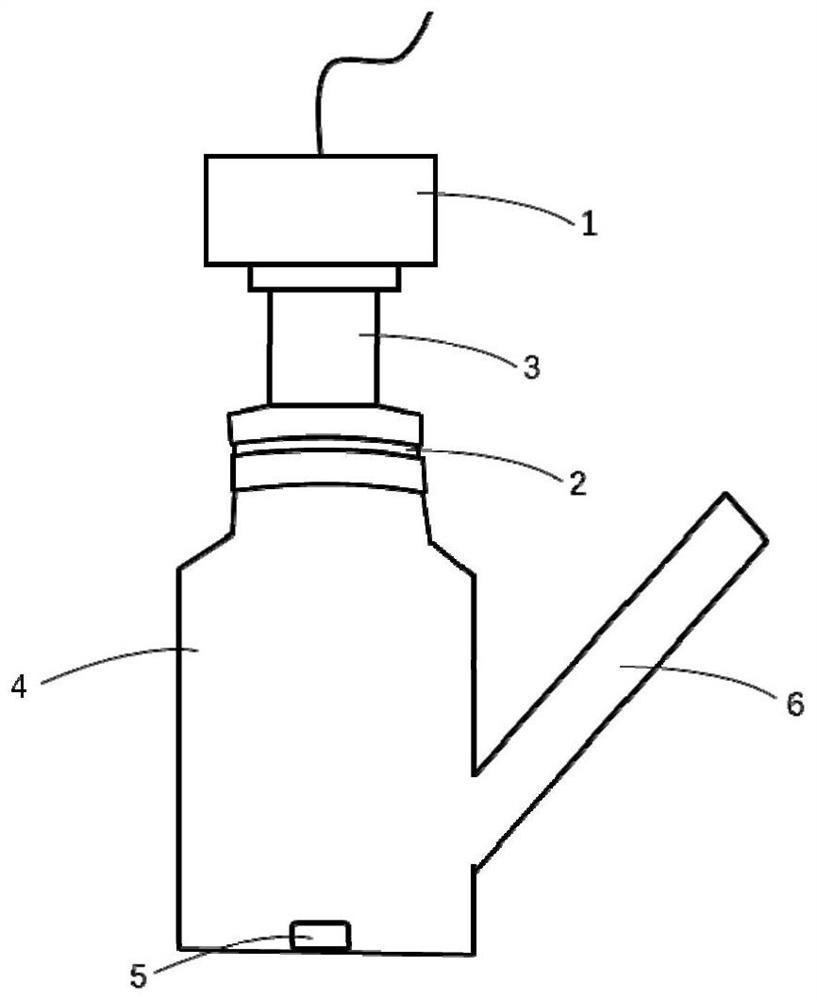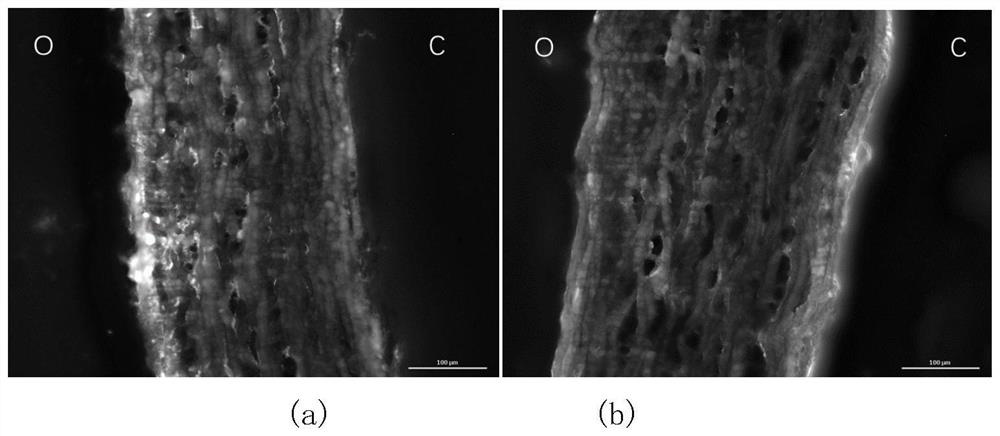Method for regulating barrier permeability by using ultrasound
A permeability and barrier technology, applied in the field of control, can solve problems such as difficult to overcome the effective treatment concentration of the eye barrier, unclear change law of sclera permeability, and can not be directly applied to humans, so as to achieve a wide range of ultrasound applications and safe effects , the effect of convenient operation
- Summary
- Abstract
- Description
- Claims
- Application Information
AI Technical Summary
Problems solved by technology
Method used
Image
Examples
Embodiment 1
[0046] Ultrasonic regulation of the permeability of a small molecule tracer (sodium fluorescein, molecular weight 376 Da) through isolated human sclera
[0047] 1) Divide the isolated human sclera into an experimental group and a control group, 15 cases in each group.
[0048] The administration pool 3 of the experimental group was filled with 1 ml of 0.03 mg / ml sodium fluorescein solution, and the ultrasonic probe 1 was kept at 15 mm vertically above the orbital surface of the eye barrier 2 (sclera) using a therapeutic-grade ultrasonic instrument, that is, the administration pool 3, the ultrasonic probe 1 is fully in contact with the sodium fluorescein solution in the drug pool 3, and the ultrasonic frequency is adjusted to 1MHz, and the sound intensity is 1.2W / cm 2 1. The duty cycle is 50%, the ultrasonic irradiation is turned on, and the irradiation time is 5 minutes. The contact time of the sclera of the control group with the same concentration and volume of sodium fluor...
Embodiment 2
[0056] Ultrasonic regulation of the permeability of a macromolecular tracer compound (FITC-dextran 40, molecular weight 40kDa) through isolated human sclera
[0057] 1) The experimental grouping was roughly the same as step 1 in Example 1, and the solution in the dosing chamber was replaced with 0.1% FITC-dextran 40 solution. 15 cases in each group,
[0058] 2) The evaluation index of the permeability change of the isolated human sclera is the same as step 2 in Example 1,
[0059] 3) The results showed that immediately after stopping the ultrasonic irradiation, the penetrating sclera distance of the FITC-dextran 40 solution in the experimental group was 1.36 times that of the control group (such as Figure 8 , 9 shown), the average fluorescence intensity was 1.79 times that of the control group (as Figure 10 shown). When 0.25h, 0.5h, 0.75h and 1h, the FITC-dextran 40 unit area accumulative permeation amount of experimental group is respectively 14.38, 6.29, 2.97 and 1.61 ...
Embodiment 3
[0061] Comparison of the permeability of a macromolecular tracer compound (FITC-dextran 40, molecular weight 40kDa) modulated by medium-frequency pulsed ultrasound and low-frequency continuous ultrasound through isolated human sclera
[0062] 1) The experimental grouping is roughly the same as step 1 in Example 1, the solution in the dosing chamber is replaced with 0.1% FITC-dextran 40 solution, the frequency of use is 82kHz, and the sound intensity is 0.12W / cm 2 Continuous wave ultrasound, ultrasonic irradiation time is 5 minutes, a total of 15 cases.
[0063] 2) The evaluation index of the permeability change of the isolated human sclera is the same as step 2 in the embodiment one, and the result is the same as that in the embodiment two (the frequency is 1MHz, the sound intensity is 1.2W / cm 2 , pulsed ultrasound with a duty cycle of 50%) for comparison of results,
[0064] 3) The results showed that immediately after stopping the ultrasound irradiation, the penetration dis...
PUM
 Login to View More
Login to View More Abstract
Description
Claims
Application Information
 Login to View More
Login to View More - R&D
- Intellectual Property
- Life Sciences
- Materials
- Tech Scout
- Unparalleled Data Quality
- Higher Quality Content
- 60% Fewer Hallucinations
Browse by: Latest US Patents, China's latest patents, Technical Efficacy Thesaurus, Application Domain, Technology Topic, Popular Technical Reports.
© 2025 PatSnap. All rights reserved.Legal|Privacy policy|Modern Slavery Act Transparency Statement|Sitemap|About US| Contact US: help@patsnap.com



